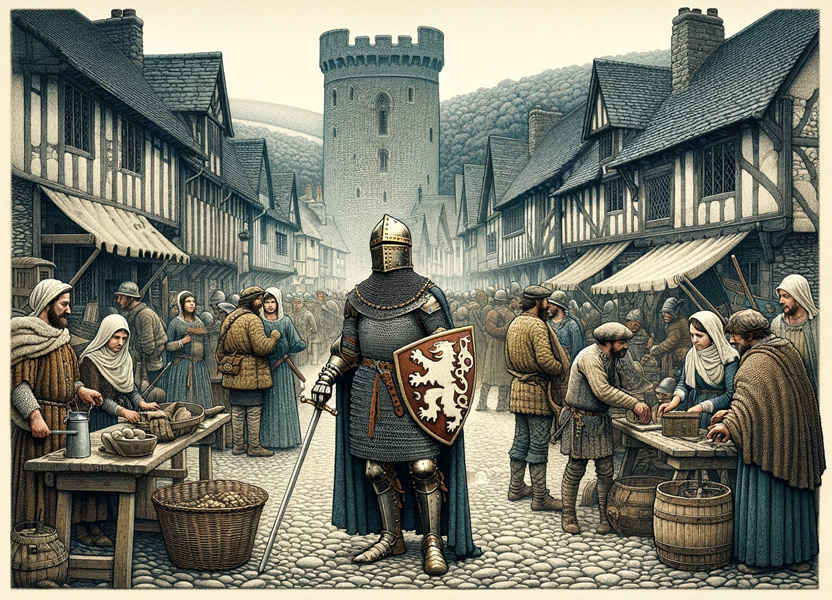13th Century Crickhowell
Medieval Crickhowell
Now we go on our journey through medieval Crickhowell by setting the scene of this Welsh town in the 13th century. Situated in the historic county of Powys and straddling the River Usk, Crickhowell was a beacon of activity and strategic importance during this period. The town’s geographical and historical significance as a crossroads between Brecon and Abergavenny provides a backdrop to its story in medieval Wales.
The Norman Influence
The Normans left an indelible mark on Crickhowell, most notably through the construction and subsequent development of Crickhowell Castle. Initially erected as a motte and bailey structure, the castle became a linchpin in the Norman strategy to dominate the Welsh Marches. This chapter will explore the castle’s role in shaping the town’s destiny, serving as a nucleus for both defence and administration.
Daily Life in 13th Century Crickhowell
The re-fortification of Crickhowell Castle in stone by Sir Grimbald Pauncefote, who married into the Turberville family, significantly impacted the town’s landscape and its residents. The construction activities would have been a central aspect of daily life, providing employment and security to the townspeople. The presence of the castle, with its commanding views along the Usk valley, underscored the town’s strategic importance and its role in the regional power dynamics. Daily life in Crickhowell during this period would have been closely tied to the castle, from the craftsmen and labourers involved in its construction and maintenance to the markets and gatherings held within its shadow.
Crickhowell’s Role in Welsh Rebellion
The strategic enhancements made to Crickhowell Castle, especially under the direction of Sir Grimbald Pauncefote and later Sir John Pauncefote, highlight the town’s significant role in the Welsh rebellions. Despite these fortifications, the castle could not withstand the forces of Owain Glyndŵr, who left it in ruins. This event illustrates the tumultuous period of Welsh history in which Crickhowell was embroiled, affecting not only its physical landscape but also its people, who lived through times of conflict and change.
Economy and Trade
The economic fabric of Crickhowell in the 1200s, while rooted in agriculture, was undoubtedly influenced by the presence and developments of the castle. The River Usk facilitated trade, and the fortified town became a focal point for economic activity in the region. The castle’s construction and subsequent re-fortifications would have stimulated local trade, from the supply of materials to the demand for goods and services needed to support its garrison and workforce.
Legacy of the 13th Century on Crickhowell
The architectural and historical legacies of the 13th century have left an indelible mark on Crickhowell. The ruins of Crickhowell Castle, with its detailed history of construction, expansion, and eventual decline, stand as a monument to the town’s medieval past. These remains, coupled with archaeological findings, continue to fascinate and inform our understanding of life during this period. The story of Crickhowell in the 1200s, encompassing its architectural endeavours, daily life, participation in Welsh rebellions, and economic developments, offers a compelling glimpse into its medieval heritage, shaping the town’s identity and heritage for future generations.

